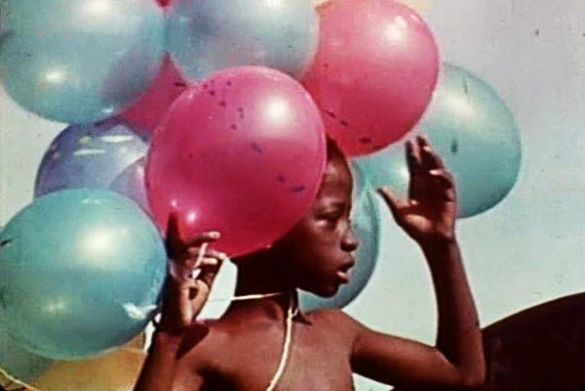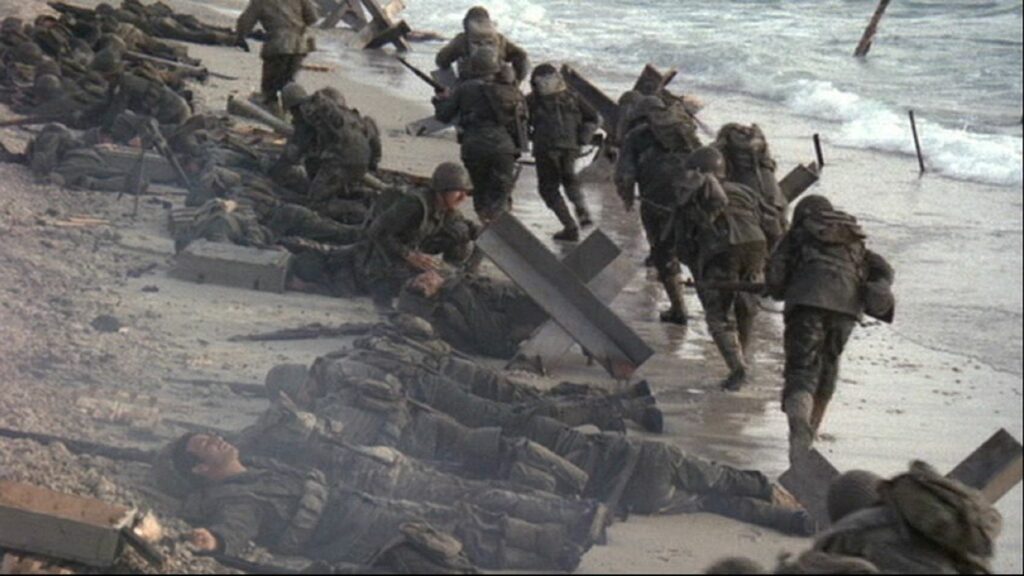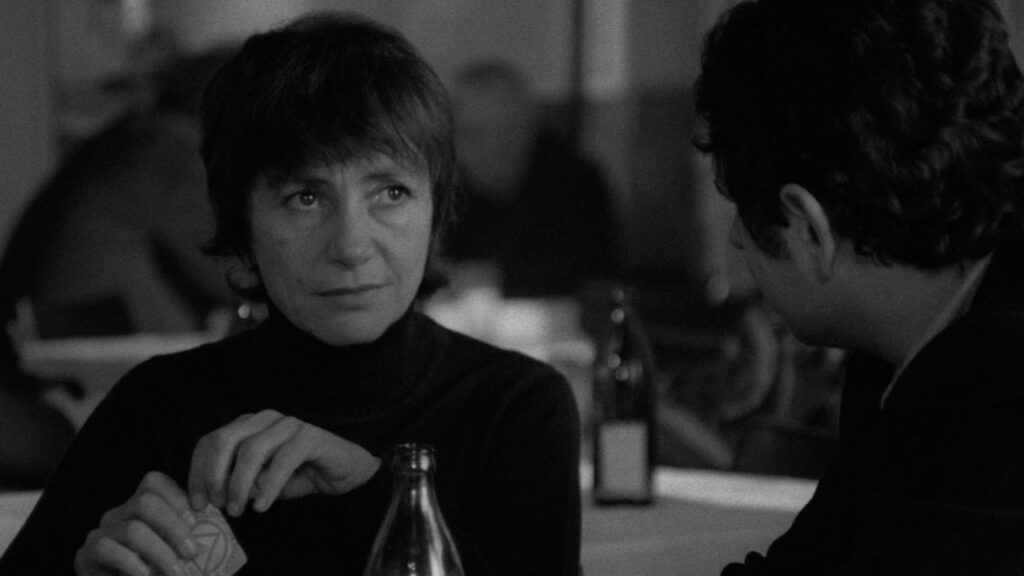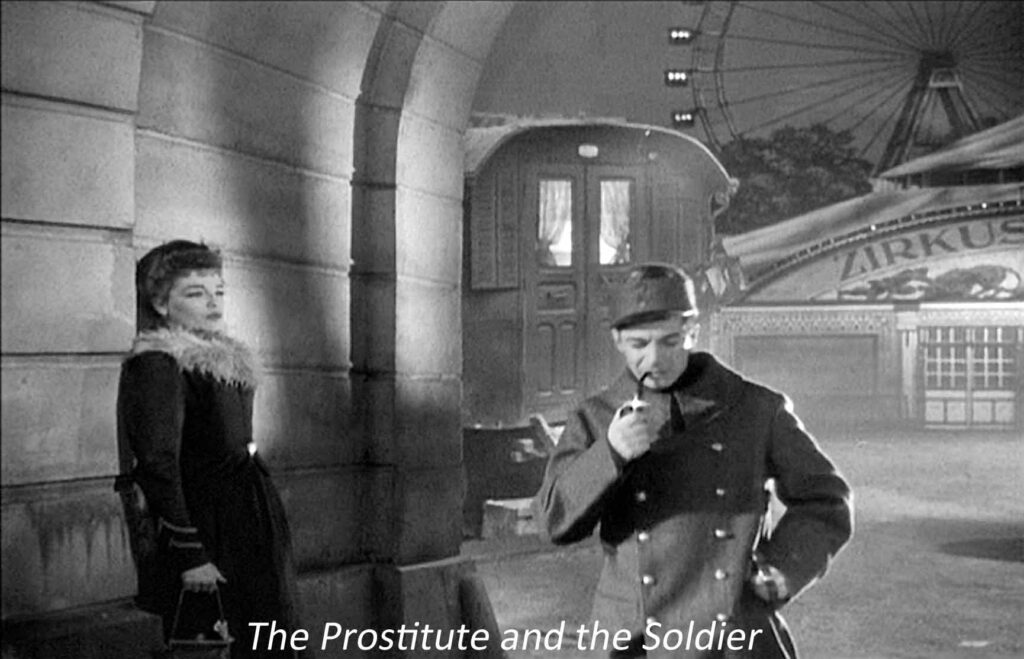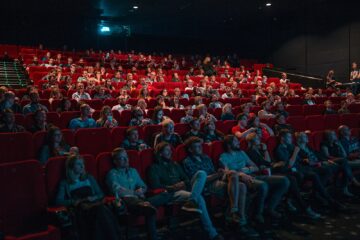Summer Programs At The Pacific Film Archive
With the news of the unfortunate closure of Berkeley’s Shattuck Cinemas, a city that decades ago offered a variety of moviegoing venues ranging from the UC Theater to the Telegraph Repertory Cinemas has now been reduced to one commercial theater. Fortunately, the Pacific Film Archive (hereafter “PFA”) is still around continuing its mission of showing that cinema can be more than entertainment, it can be an artistic medium.
Take the upcoming PFA summer schedule, which runs in various forms from June 3 to August 31, 2022. This quarter’s upcoming film series feature: a trip through the work of an institution dedicated to preserving world cinema (Film Preservation: Celebrating The Film Foundation); films from an American director whose work calls b.s. on the America cherished by the Faux News crowd (From The Front Page To The Front Lines: The Essential Sam Fuller); one of the real-life inspirations for an anime classic (Forever Kinuyo Tanaka); a retrospective of the cinema of a pioneering director whose films put the lives of women front and center (The Films Of Marta Meszaros); and non-musical films whose essence is captured in a dance scene (Indelible Moments: May I Have This Dance). As an added perk, the PFA will have three free outdoor screenings in August (Free Outdoor Screenings–Indelible Moments).
Here follows a closer look at what you can expect.
Film Preservation: Celebrating The Film Foundation (June 4 – August 27)
For those who’ve never heard of The Film Foundation, it’s a nonprofit organization that’s the epitome of giving back to the filmgoing community. Founded in 1990 by director Martin Scorsese and such other directors as George Lucas, Steven Spielberg, and Francis Ford Coppola, the Foundation is dedicated to protecting and preserving cinema history. The films preserved by the Foundation may not necessarily be commercial crowd pleasers. But they have ranged from classics of cinema (“L’Atalante”) to rarities from acclaimed directors (“Forbidden Paradise”) to films that fell victim to censorship or neglect (“Sambizanga”). Over 925 (to date) films from around the world have been restored thanks to the Foundation’s work.
PFA’s film series pays tribute to the Film Foundation’s efforts with screenings of the films mentioned above as well as these films among others:
Mario Soffici’s tropical noir “Prisoners Of The Land” has been revered as one of the great Argentine films. It’s 1915 in the jungle province of Misiones. Here, badly exploited plantation laborers get driven to turn this wild land into a source of income for the plantation landowner. In the midst of this situation comes a love triangle involving a proud worker, a ruthless foreman, and the woman who must choose between these two men.
In “Badou Boy,” acclaimed Senegalese director Djibril Diop Mambety captures life in Senegal’s capital city Dakar through a series of vignettes. The titular character is a punk kid who provides the film’s dramatic center. He and the other characters connive to better themselves while also giving the proverbial finger to authority figures of all stripes.
The hunt for a serial killer of judicial officers (e.g. judges, prosecutors, magistrates) propels Francesco Rosi’s “Illustrious Corpses.” But as Lino Ventura’s police detective doggedly pursues leads, he’s dismayed to discover just how many people and institutions in Italian society would be quite happy to see the country’s judiciary collapse. Call this film a combination detective thriller and political expose, and you wouldn’t be far wrong.
From The Front Pages To The Front Lines: The Essential Sam Fuller (July 29-August 31)
Broke-Ass readers really should get to know the work of American director Samuel Fuller. The heroes and heroines of his films are society’s underdogs. Whether they’re petty criminals, foot soldiers, or just general misfits, Fuller’s films celebrate their ability to survive everything from tough breaks to psychological trauma.
His storytelling style comes from a combination of his journalistic background and his accepting the creative independence of a curtailed budget. As a reporter, he covered everything from crime stories to the lives of folks devastated by the Great Depression. (One of the bigger stories Fuller covered was San Francisco’s 1934 General Strike.) Fuller’s war, crime, and Western movies may not have been made on luxurious budgets, but they were more emotionally honest than bigger-budgeted fare of the time.
Here are some of the series offerings:
If the typical Hollywood war movie makes you hurl, you definitely need to check out “The Big Red One: The Reconstruction.” Fuller’s dream project recounts what befalls the members of the First Infantry Battalion (the titular numeral) in World War II as they go from North Africa all the way to Germany. The events and feelings are drawn from Fuller’s own experiences in the war and are embodied in the characters of the grizzled Sergeant (Lee Marvin) and the cynical would-be writer Zab (Robert Carradine). The ultimate truth that Fuller’s characters learn is that the only glory that comes out of war is surviving it.
“Park Row” may be an unconventional film for Fuller as it deals with the early days of what will become modern journalism. But the film embodies for the director his complicated feelings about the journalistic profession. In 1886, there’s intense competition between rival newspapers the Star and the Globe. The latter is founded by idealistic journalist/crusader Phineas Mitchell (Gene Evans), whom Fuller models on such famous editors of the time as Joseph Pulitzer. In this journalistic rivalry, anything can give a particular newspaper the edge…even an idea that pops into Mitchell’s mind while he’s hanging out in a bar (which Mitchell does a lot).
Regular visitors to the Roxie Theater who’ve seen a poster for Fuller’s “The Naked Kiss” in the theater lobby will now get a chance to see the film itself. The setup may be a familiar genre staple: former criminal (Constance Towers’ hooker) attempts to go straight (as a pediatric orthopedist) in a small town yet only finds herself caught up in scandal (having an affair with the town’s richest man will do that). But what makes this film special is a tone zigzagging from double-entendres aplenty to straight morality play. The story gets served with some choice dialogue and dark humor (e.g. one of the prostitute heroine’s last tricks before going straight is a session with the town’s police chief)..
Forever Kinuyo Tanaka (July 8 – August 25)
Fans of the Satoshi Kon anime classic “Millennium Actress” will remember that the titular actress, Chiyoko Fujiwara, was inspired by several great Japanese film actresses. One of those actresses who inspired Fujiwara’s creation was Kinuyo Tanaka, whose film career spanned half a century.
This film series offers a chance to experience both sides of Tanaka’s amazing cinema career. The actress portion of Tanaka’s film work, many cinemagoers are already familiar with. This series includes performances for such famous directors as Yasujiro Ozu, Kenji Mizoguchi, and Mikio Naruse. But the other portion of Tanaka’s career, as a film director, will be a surprise. Tanaka directed half a dozen films on the theme of women trying to better their lives in the face of discrimination or illness. Now, for the first time in years, all of the films Tanaka directed have been restored for presentation on the big screen.
One of these films is “Forever A Woman,” a biopic about the poet Fumiko Nakajo. The film follows the poet’s struggles for self-realization in the face of a clusterf**k of such personal tragedies as the end of her marriage, an unfulfilled desire for her mentor, and a gradually worsening case of breast cancer. Despite all these personal problems, Nakajo does find professional success in her writing.
The last of the films Tanaka directed is “Love Under The Crucifix.” In the 16th century, Gin is the daughter of a respected Christian tea master. She’s fallen for a married Christian samurai. However, realizing her love for this samurai means going against a society which, among other things, has outlawed the practice of Christianity.
And for an example of what Tanaka can do as an actress, check out the Kenji Mizoguchi masterpiece “The Life Of Oharu.” Tanaka plays the title role, a court lady whose life goes into a downward spiral after she gets exiled from court. Oharu’s father sells her to become a courtesan, and as she suffers degradation after degradation, her social respectability also slowly erodes. Yet is this a case of poetic justice or one of punishing a woman for her sexuality?
The Films Of Marta Meszaros (June 3 – July 20)
The famed Bechdel Test for movies would have given high marks to the films of Hungarian filmmaker Marta Meszaros. In a career begun at a time when women in general were perceived as incapable of independent decision making, Meszaros’ films have continually put the realities of being a woman front and center. More than that, the social, political, and economic forces that shape women’s choices and actions also get exposed in the glare of Meszaros’ camera.
This first major retrospective of Meszaros’ films will definitely appeal to more than a few Broke-Ass readers. All of the films in the retrospective may be set in Hungary. But the sentiment that the people around you or even society is lying to you when they claim that life is fine is one that crosses national borders.
Try the following films:
“Adoption” won the top prize of the Golden Bear at 1975’s Berlin Film Festival. It was the first woman-directed film to do so, and it would open up new creative ground for Eastern and Central European filmmakers. It’s the story of the relationship between two women from two different generations. Middle-aged factory worker Kata wants to have a child with her married lover. Tough teenager Anna is a ward of the state who seeks emancipation so she can marry her boyfriend. The topics brought up in the film (e.g. love and intimacy) may have been familiar, but the treatment of these topics would be groundbreaking.
In “Riddance,” Meszaros looks at the intersection between romance and class inequality in a different way. A young textile mill weaver pretends to be a student so she can pursue a romance with an upper-class college boy. Eventually, she ‘fesses up to her lover, but now the duo are faced with the problem of explaining things to the boy’s parents. At what point will the lovers be forced to finally get real?
If you’ve ever been to the Roxie Theater’s “The French Had A Name For It” film series, you may have seen the actress Marina Vlady in several French film noirs. In Meszaros’ “The Two Of Them,” Vlady takes on a far different role as the weary manager of a women workers’ hostel. She befriends an angry yet sullen young single mother. The two women may be from different generations, but they both know the wrongness of the restricted life path to which society has condemned them.
Indelible Moments: May I Have This Dance (June 12 – August 25)
You know how thinking of a particular line of dialogue or an image can bring back the joys of watching a particular movie? For former PFA director Edith Kramer, her cinematic madeleines are dance scenes…appearing in non-musical movies. And we’re not necessarily talking about images of people gracefully moving their bodies to the sound of music. It can be an improvisation with a pair of dinner rolls (“The Gold Rush”) or the choreography of roaming the night streets looking for a potential significant other (“Toute Une Nuit”).
This film series brings together films having these “dance scenes” from such famed directors as Charlie Chaplin, Jean-Luc Godard, Claire Denis, and Chantal Akerman. While the bulk of these screenings will be shown at the PFA’s Barbro Osher Theater, there will also be three outdoor screenings in August on the PFA’s huge LED screen.
Here are examples of what this series will feature:
In Max Ophuls’ “La Ronde,” the entire movie is a witty dance of romantic relationships set in a Vienna when the waltz was in vogue. The film begins with the breakup of the relationship between Simone Signoret’s prostitute and Serge Reggiani’s soldier. The soldier moves on to Simone Simon’s chambermaid, but… By the end, the story returns to the prostitute.
Charles Burnett’s “Killer Of Sheep” has, by contrast, just one dance sequence: a slow dance between alienated slaughterhouse worker Stan and his wife. But rather than bearing the promise of amorous pleasure, this unforgettable slow dance captures the state of mind of someone whose life has not only been a failure at getting ahead but is also one of not being able to stay in place.
How does a dance fit into a retelling of the Gunfight At The O.K. Corral? In the classic John Ford Western “My Darling Clementine,” the dance between Henry Fonda’s Wyatt Earp and the titular Clementine symbolizes the Wild West’s passage and the arrival of civilization. Even if you’ve seen Ford’s film before, the version shown in the PFA series happens to be a restoration of a longer preliminary preview cut that’s closer to Ford’s intentions.
Hopefully, this sampler of PFA’s Summer programming will inspire you to check out the rest of the offerings here and even come to one of PFA’s Center Street screenings.


